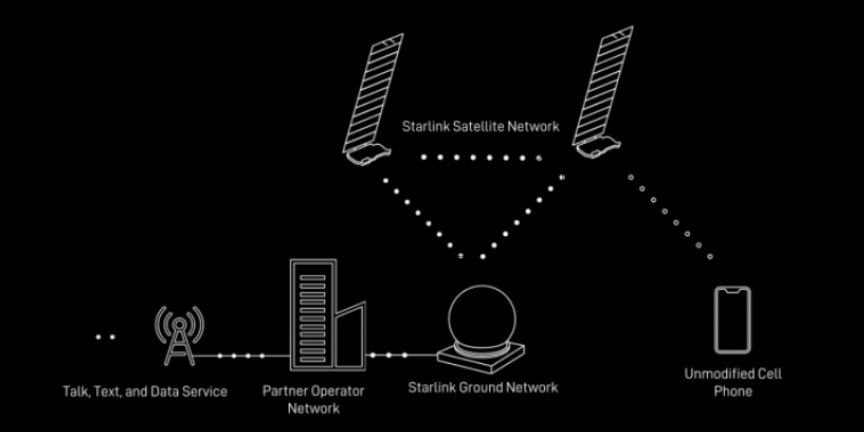SpaceX has taken a giant leap towards revolutionizing mobile communication with the successful launch of its first six Starlink satellites equipped to provide direct-to-cell phone coverage. This groundbreaking technology has the potential to disrupt the traditional telecommunications landscape by eliminating the need for terrestrial cell towers and providing seamless connectivity to even the most remote corners of the globe.

Breaking Free from Ground Stations
Conventional mobile phone networks rely on a network of ground stations to transmit and receive signals from cell phones. These stations can be expensive to build and maintain, and their coverage often sputters out in rural and remote areas. Starlink Direct to Cell, as SpaceX’s new service is called, bypasses this limitation entirely by using a constellation of satellites in low-Earth orbit to connect directly with smartphones.
This satellite-based approach offers several advantages over traditional ground networks. First, it eliminates the need for costly ground infrastructure, making it a more cost-effective solution for providing coverage in remote and underserved regions. Second, Starlink’s vast network of satellites promises wider and more consistent coverage, even in areas with challenging terrain or dense foliage.
Connecting the Unconnected
The initial focus of Starlink Direct to Cell will be on providing coverage to underserved areas in countries like the Philippines, Canada, and Japan. This is a significant step towards bridging the digital divide and bringing reliable mobile connectivity to millions of people who currently lack access. In the Philippines, for example, an estimated 70 million people live in areas with limited or no cellular coverage. Starlink’s technology has the potential to connect these remote communities to the rest of the world, opening up new opportunities for education, healthcare, and economic development.
The Future of Mobile Communication
While Starlink Direct to Cell is currently in its early stages, it has the potential to reshape the future of mobile communication. With its ability to provide ubiquitous and affordable connectivity, Starlink could bring an end to the digital divide and connect the next billion users to the mobile internet. Major telecom operators like T-Mobile US and Rogers Communications have already partnered with SpaceX to test the technology, and it’s likely that more will follow suit in the coming years.
The launch of these first six Starlink satellites marks a significant milestone in the development of this revolutionary technology. As SpaceX continues to build out its constellation of satellites and refine its Direct to Cell service, we can expect to see even more widespread adoption and a truly connected world within reach.






